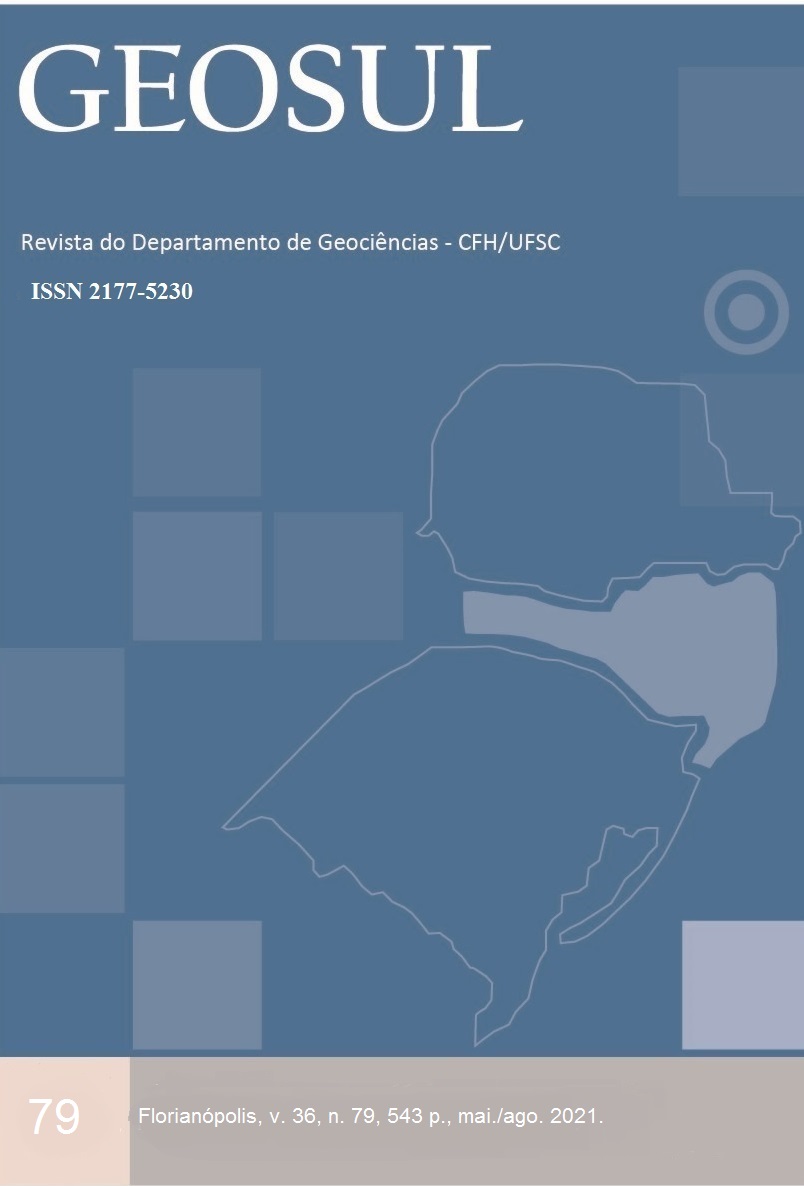Estudo de visibilidade em sistemas de transmissão de energia – análise de intervenção na paisagem da Coxilha Rica
DOI:
https://doi.org/10.5007/2177-5230.2021.e67997Resumo
O Caminho das Tropas são estruturas remanescentes de importantes vias terrestres construídas e utilizadas no Brasil Colônia na região da Coxilha Rica em Santa Catarina. O objetivo principal deste trabalho foi desenvolver e aplicar um método para tomada de decisão aplicado à gestão territorial da paisagem da Coxilha Rica. O método consistiu em mapear a poligonal de visibilidade, levando em consideração a acuidade visual humana, a partir de pontos definidos como principais (fazendas históricas e corredores de taipas) e realizar análises espaciais que permitisse indicar alternativas de intervenção (inserção de sistemas de transmissão de energia elétrica) de forma a preservar o ambiente cênico da região.Referências
ABATI, S., CELESTINO, V. S.; KUNZ, R. Complexo de PCH do rio pelotinhas - estudo de visibilidade: análise de intervenção na paisagem. Trabalho Técnico Eletrosul: Florianópolis, 2010.
BIBLIOTECA VIRTUAL EM SAÚDE. Disponível em: http://regional.bvsalud.org/php/decsws.php?tree_id=G14.760&lang=PT. Acesso em: 05 jul. 2016.
CARMONA, F. M. M.; COSTA, M. F.; VENTURA, D. F.; SALOMÃO, S. R.; BARROS, P. S. M. Acuidade visual de resolução de grades pelo método dos potenciais visuais evocados de varredura: padronização da metodologia para uso em cães. Brazilian journal veterinary res. and animal science, São Paulo, v. 43, suplemento, p. 86 – 92, 2006.
CELESTINO, V. S. ; KUNZ, R ; ABATI, S. Estudo de visibilidade análise de intervenção na paisagem estudo de caso na Coxilha Rica, Lages/SC. In: XXIV Congresso Brasileiro de Cartografia e II Congresso Brasileiro de Geoprocessamento, Aracaju/SE. Anais do XXIV Congresso Brasileiro de Cartografia, v. 1. 2010.
CELESTINO, V. S. Estimativa de alcance visual humano aplicado à preservação de ambientes cênicos. Revista de Geografia e Ordenamento do Território, Lisboa, Portugal, nº11, p. 99 – 123, 2017.
ESPARTEL, L. Curso de Topografia. Porto Alegre: Editora Globo, 1965.
HERBERTS, A. L. Arqueologia do Caminho das Tropas: Estudo das estruturas viárias remanescentes entre os rios Pelotas e Canoas, SC. 2006. Tese (Doutorado em História) - Programa de Pós-Graduação em História (PPGH), Pontifícia Universidade Católica do Rio Grande do Sul (PUCRS), Porto Alegre, 2006.
SILVA, J. L. Nivelamento Trigonométrico. Apostila, Universidade Federal do Rio Grande do Sul (UFRGS): Porto Alegre, 2010.
STOLFI, G. Percepção Visual Humana. Televisão Digital, v. 4, p. 1 – 13, 2008.
UNESCO. Convenção do Patrimônio Mundial, 1999. IPHAN., 1999: Cartas Patrimoniais. Disponível em: http://unesdoc.unesco.org/images/0013/001333/133369por.pdf. Acesso em: 23 mar. 2009.
Downloads
Publicado
Edição
Seção
Licença

Este trabalho está licenciado com uma Licença Creative Commons - Atribuição 4.0 Internacional.





